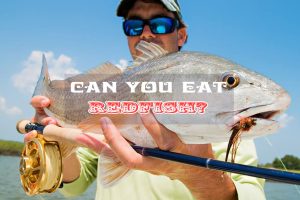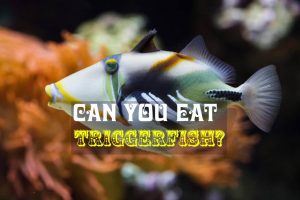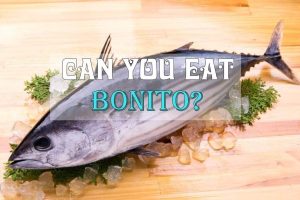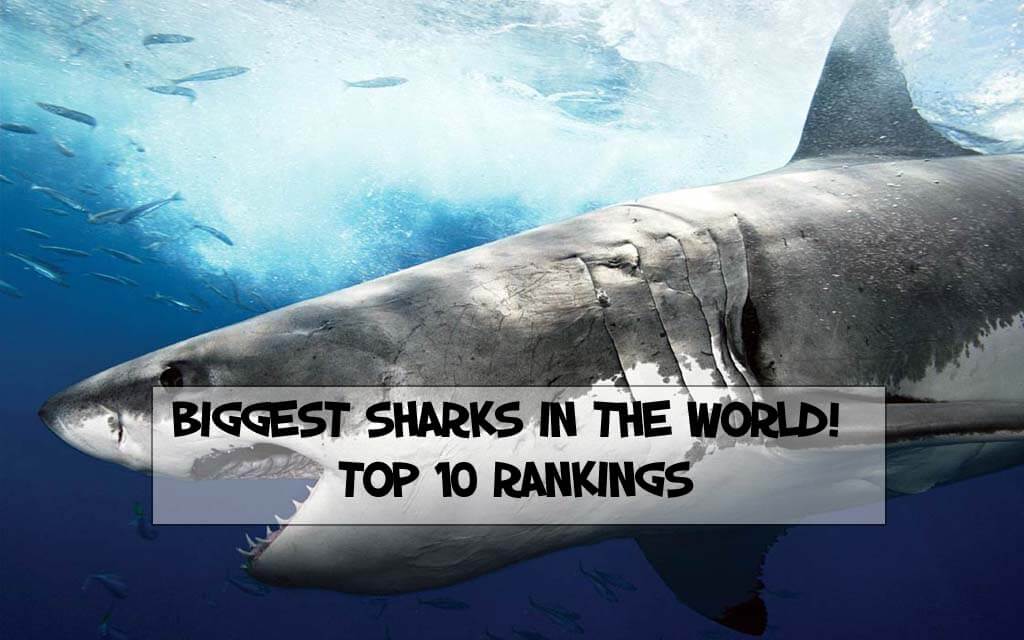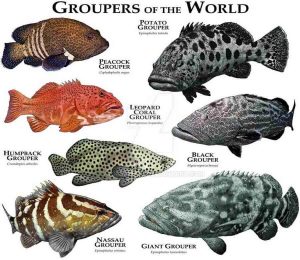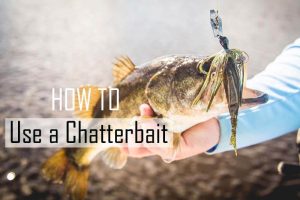Many people often ask “What Do Mullets Eat?” This article will talk in detail.
Scientists believe that there are roughly 33,600 different types of fish species present on Earth. Out of all of these species, the Mullet is one of the best and most interesting.
Mullets, commonly referred to as grey mullets, are ray-finned fish in the family Mugilidae. The world is home to 78 mullet species, which are divided into 20 genera.
Although some species can survive in freshwater, they prefer coastal temperate and tropical waters. The majority of species are found there.
The mullet species is characterized by its two distinct dorsal fins, small triangular mouths, and lack of a lateral line organ, though the various genera and types of mullet do differ somewhat.
In the water, mullets can be recognized by their long shape, glossy silver or red scales, and distinctive fin location.
Mullets are a valuable source of food. Since Roman times, they have been a significant source of food for the inhabitants of Mediterranean Europe, and this species continues to be significant for both locals and the fish industry today.
Not all mullets are taken from the wild. These fish species are also raised in large, moderately intensive ponds, and in some areas, they are housed in shallow coastal waters in netted enclosures.
What Do Mullets Eat?
They’ll consume almost anything they can. Food sources include microscopic plants, debris, insects, and flesh are all favorites of mullets.
Mullets typically eat small food bits since they have tiny jaws. They enjoy food and won’t hesitate to nibble on almost anything.
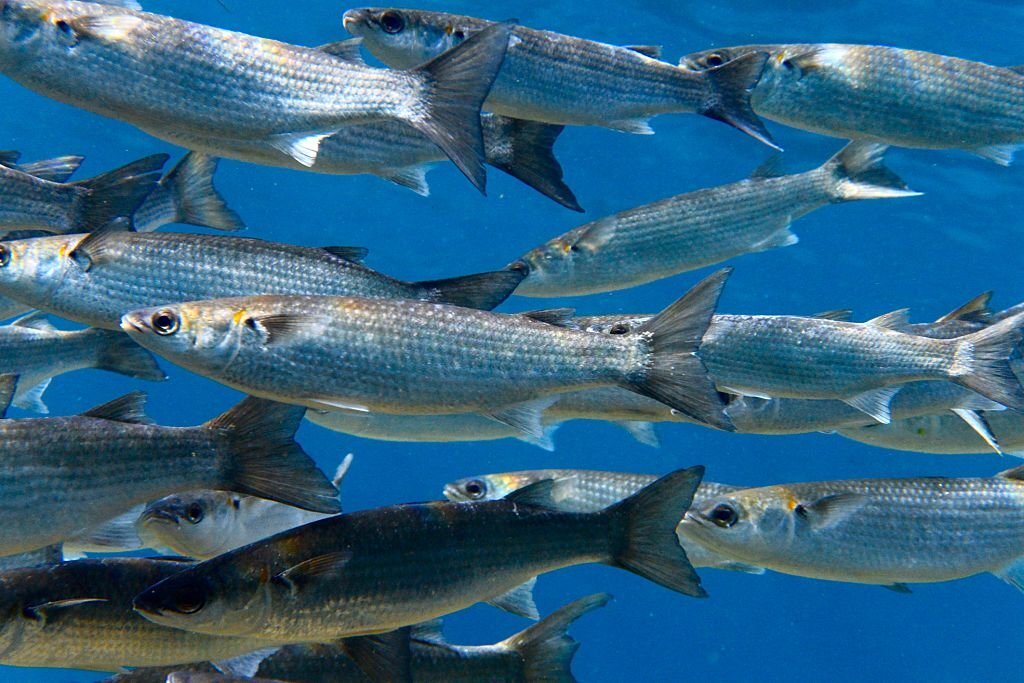
School of Mullet – What Do Mullets Eat?
The majority of a mullet’s day is spent finding and consuming food so they can receive the necessary nourishment to remain healthy.
Setting your bait low to the ocean floor can help you catch more mullets because that is where you will find them.
They are mostly found in these areas since the ocean floor is where they collect the majority of food scraps. They enjoy swimming in docks in search of excellent food.
Here is a brief overview of the major food categories that mullet are most likely to eat:
-
Small plants
Any form of small plant that grows on the ocean floor will be consumed by mullets. They will eat a variety of things, including debris, green sea lettuce, diatoms, filamentous green algae, and blue-green algae.
Mullets continuously nibble at any plant sources they can discover rather than taking large portions of food off the plant.
-
Detritus
Detritus is a substance made from the discarded byproducts of decaying plants. Typically, regions with a lot of vegetation are where you can find this substance.
Detritus will fall to the ground and spread out. A log of the compound’s interactions with objects like rocks and plants in the region.
-
Insects
Mullets also enjoy devouring several kinds of insect larvae. Many anglers believe that maggots are their preferred food source since they like nibbling on them.
This is a typical form of fishing bait. Ragworms can also be used to catch mullets if you are unable to find any maggots.
To ensure that the mullet can fit the entire piece and hook into its mouth, always use small pieces of food or small worms on hooks.
-
Flesh
These bottom feeders will eat bits of leftover flesh as well. They enjoy eating mackerel meat.
If you plan to use mackerel flesh as bait, keep in mind that the chunks should be completely skinless and free of any traces.
Other fish species will be drawn to you instead if you use huge portions.
-
Bait
Mullets are frequently lured with bait to a specific area so you may catch them quickly. Almost any kind of food can be used as bait.
To draw fish, fishermen frequently use bread or pastries on their hooks. Always make sure you have the appropriate fishing license if you intend to catch anything.
Using special dough with a hook inside that is made of a flour and water mixture is another typical technique.
-
Different Diets
The mullet is an omnivorous fish. They don’t care what they eat and will eat both plant and animal parts.
Although they do like some meals, such as insects, meat, and microscopic plants, they will also eat other food kinds.
Their diet can consist of any edible food imaginable, such as bread, fruits, veggies, and more.
-
Seafood from farms
Farmers in fish farms have the option of providing natural feeds like rice or grain mills to feed their mullet. Farmers in polyculture farms may decide to buy pellets made at feed mills.
The dietary needs of the main fish species are taken into account when formulating manufactured fish feed, and many of these formulated feeds are made to maximize growth and increase harvests.
Chicken manure and cow dung fertilizers are also utilized as fish meals in aquaculture ponds.
These diets are typically supplemented with food components provided by natural plants cultivated in aquaculture ponds, as well as rice, cornmeal, and wheat bran
How are mullets fed?
A mullet is relatively simple to feed. Simply dunk food scraps into the water and wait impatiently for the fish to arrive.
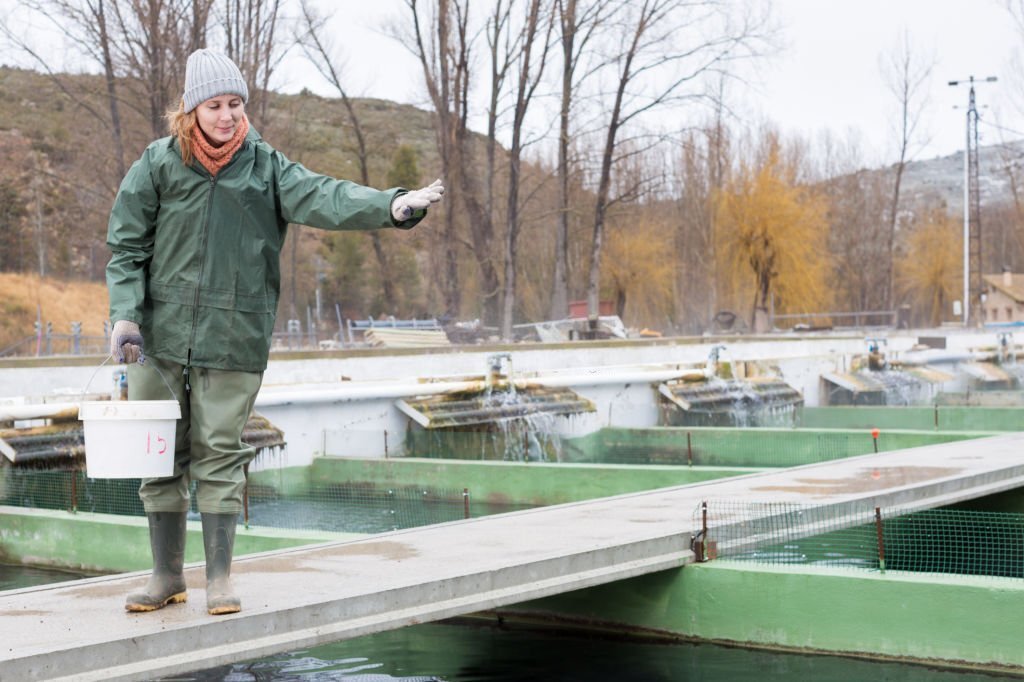
Young female worker feeding fish
If you chop your food into small pieces, mullets will be more likely to eat it because they do like smaller things.
The way you feed mullet depends on what you intend to do with it.
-
Feeding fish as a pet
You can simply feed your mullet fish pellets that you can buy at any pet store if you plan to keep it as a pet.
Fish pellets are nutrient-dense, and since mullets eat many kinds of food, they will be content to eat these pellets.
-
Wild-life fishing
It is best to initially draw mullets to the area before you set out bait to catch them if you are fishing for mullets to eat.
A few days before fishing, fishermen will frequently scatter small amounts of food in a specific region to entice fish species to the area.
You can use foods like soft bread and water or maize to draw particular fish species to an area.
You can use bait on your hook to attract fish on the day of your fishing trip. The variety of bait available to fishermen includes special dough, ragworms made from mackerel flesh, and maggots on the hook.
In contrast, if you use small enough pieces, the mullet will bite the entire piece and swallow the hook along with it.
If the pieces are too large, your fish may nibble them off the hook. This makes it simple to use a hook to capture the mullet.
Mullet can also be caught with nets. You can set up the net around your regular feeding time to catch these fish if your mullet is accustomed to feeding in a specific region.
-
Feeding fish farms
you are raising mullet for farming, you want them to grow and put on as much weight as they can.
As mullets get bigger, their dietary needs rise along with their capacity to eat larger portions of food like fish food pellets.
Explore more: 15 Types of Flatfish to Eat in the Ocean: The Ultimate Guide
How much do mullets consume?
It is unknown how much mullet is consumed. These subterranean creatures are known snackers and, given the chance, would eat continuously all day.
It is probably crucial to avoid overfeeding your fish because of this. Fish may become ill if they eat too much of some items, and overfeeding can make the water unclean.
It is vital to consistently provide enough feed for fish to maintain their greatest health.
Your mullets will grow steadily if they have a consistent source of food, and you will have far greater control over their size and weight at different phases of farming.
It’s crucial to avoid dunking too much food when mullet bait is being used to draw fish to a certain location.
When it’s time to go fishing, leftover food particles may hinder your success. When you go fishing, be careful not to put the same kind of food pieces in the water as your bait.
This will prevent fish from following the free food you may be offering and catching onto your hook.
What do young mullets eat?
What Do Mullets Eat? Typically, mullet fries rely on natural sources. Before water is added, the soil in tanks is typically treated by adding animal manure.
To feed small fish while they are kept in nursery ponds for 4 to 6 months, chemical fertilizers and chicken manure can also be added.

Young flathead mullet (Mugil cephalus) fishes
Fry mullet will eat natural things that are present on top of the earth while they are in the wild. These diets can range from fragments of plants to flesh and larvae.
What do wild mullets consume?
Wild millet will eat anything they come across in their area. They will eat small plant fragments, plant debris, wilted plants, pieces of flesh, small insects, larvae, worms, and maggots. A mullet will try to nibble on anything.

Mullet prefers eating maggots. They adore eating these little, squishy worms. When fishing for wild mullet, bait like dough paste, ragworms, or maggots is frequently used as food.
Conclusion
When raised in farms or captivity, millet fish is one of the simpler fish species to care for. What Do Mullets Eat? They will eat anything, and because they help clean the water in aquaponic farms, they are quite useful. They are delicious to eat, and their quick pace of growth makes them perfect for commercial fishing.
Explore more: Arctic Char vs Salmon – Interesting facts you didn’t know



